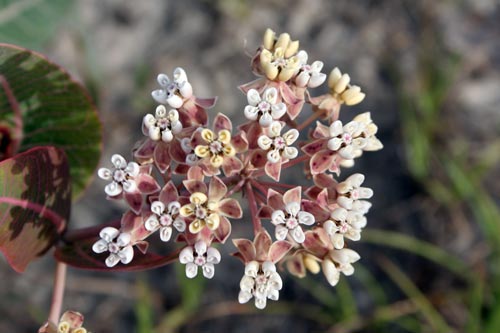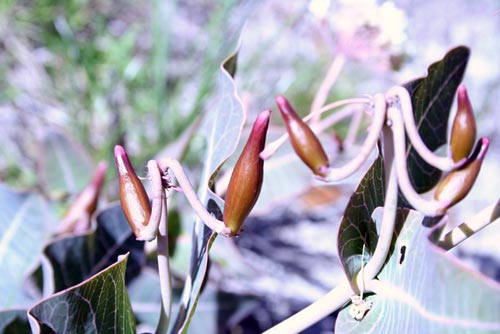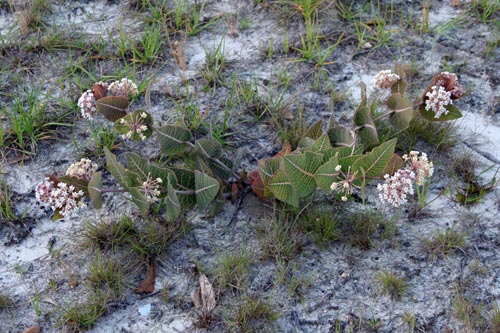Asclepias humistrata, (Sandhill, Pinewoods Milkweed)
General Description
Humistrata means low growing or sprawling, a term that fits the prostrate growth form of this species with stems that are flat or nearly flat to the ground. Stems are purplish, a color that continues along the veins into the dull green leaves.
Form/Growth
Distribution: AL, FL, GA, LA, MS, NC, SC
Flower: Color is pink to white. Corolla color generally a light pink compared to the hoods and horns that are cream to white. Flower size, approximately 3/16 in (5 mm) wide by 7/16 in (1 cm) long. 30 +/- flowers per umbel.
Foliage: Ascending. Stem and veins in the leaves are a pale purple. Leaf arrangement is opposite and attachment is sessile.
Habitat: Dry areas with sandy soils, often within or adjacent to relatively open forests.
Height: 1-3 ft (30-91 cm).
Leaves: Clasping. Color is dull green with pink to purple veins.
Roots: Taproot.
Toxicity: High.
Reproductive
Blossoming Season: March – June.
Life span: NA
Propagation: By seed.
Pods: 3-5 in (7 ½ – 12 3/4 cm) long. Stands erect.
Seed Color: Brown.
Environment and Growth Requirements
Maintenance: Low.
Overhead Conditions: Full sun to nearly full sun.
Precipitation: 30-60 in (76-152 cm) annually.
Soil Texture: Sandy and dry.
Temperature: Can tolerate minimum temperatures of 10 to 20 Fahrenheit (-12 to -6 Celsius).



Work Cited: enature.com, Plants.usda.gov, plants.ifas.ufl.edu, wikipedia.org, meltonwiggins.com, Arborday.org, Eduplace.com, Wildflower.org, Wildflowers of the Eastern United States, Wilbur H. Duncan, Marion B. Duncan
Photos: Edith Smith




